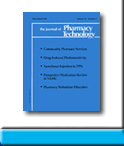 |
 |
A TIME-KILL EVALUATION
OF FLUCONAZOLE AND AMPHOTERICIN B AGAINST CANDIDA ISOLATES
David S Burgess, Rhonda W Hastings, and James S Lewis
II
To request full article click here.
OBJECTIVE: To compare the activity of fluconazole and amphotericin B against four isolates of Candida spp. with varying susceptibilities by use of time-kill methodology.
METHODS: Two isolates of Candida albicans and one isolate each of Candida tropicalis and Candida glabrata were used for all experiments. Susceptibilities were determined in duplicate by E-test. Time-kill studies were performed with fluconazole 1, 10, and 20 µg/mL and amphotericin B 0.25, 1, and 2.5 µg/mL. Samples were withdrawn at 0, 2, 8, 12, and 24 hours for fluconazole and at 0, 0.5, 1, 2, 4, 12, and 24 hours for amphotericin B, diluted if necessary, then plated on potato dextrose agar plates. After incubating plates at 35 °C for 24 hours, colony counts were determined.
RESULTS: The minimum inhibitory concentration of fluconazole and amphotericin B, respectively, were as follows: 0.75 and 0.25 µg/mL for C. albicans ATCC 90028, >256 and 0.25 µg/mL for C. albicans 1378, 2 and 1 µg/mL for C. tropicalis, and 12 and 0.125 µg/mL for C. glabrata. Differences observed in the activity of fluconazole were dependent on the Candida spp. and susceptibility to the drug. All three concentrations of fluconazole were fungistatic against C. albicans ATCC 90028 and ineffective against C. albicans 1378 (the resistant isolate). Fluconazole suppressed the growth of C. tropicalis for the initial eight hours, after which fungal growth resumed. Against C. glabrata, fluconazole was ineffective at 1 µg/mL, whereas the 10- and 20-µg/mL concentrations were fungistatic for the first 12 hours. Amphotericin B displayed a concentration-dependent effect against all four isolates of Candida spp.
CONCLUSIONS: Fluconazole 10 and 20 µg/mL were either fungistatic or suppressive for each of the susceptible and susceptible dose-dependent Candida isolates for the initial eight to 12 hours. In addition, despite resumed fungal growth, final colony counts with these concentrations were decreased by >80% compared with the growth controls at 24 hours. By comparison, the activity of amphotericin B was dependent on concentration against all four isolates, and fungicidal activity was demonstrated with only the concentration of 2.5 µg/mL. These concentrations of fluconazole and amphotericin B are readily available with common, clinically used dosing regimens (i.e., fluconazole 400 mg qd and amphotericin B 1 mg/kg/d).
J Pharm Technol 2000;16:102-6.
To request full article click here.
|
|
|
||
|

